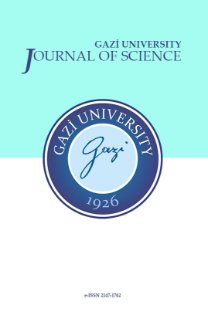Cubic Transmuted Power Function Distribution
Cubic Transmuted Power Function Distribution
___
- [1] Azzalini, A., “A class of distributions which includes the normal ones”, Scandinavian Journal of Statistics, 12:171–178, (1985).
- [2] Gupta, R., and Gupta, R., “Generalized skew-normal model”, Test, 13:501–524, (2004).
- [3] Jamalizadeh, A., Behboodian, J., and Balakrishnan, N., “A two-parameter generalized skew-normal distribution”, Statistical and Probability Letters, 78:1722–1728, (2008).
- [4] Sharafi, M., and Behboodian, J., “The Balakrishnan skew-normal density”, Statistical Papers, 49:769– 778, (2008).
- [5] Elal-Olivero, D., “Alpha-skew-normal distribution”, Proyecciones Journal of Mathematics, 29:224–240, (2010).
- [6] Sharafi, M., Sajjadnia, Z., and Behboodian, J., “A new generalization of alpha-skew-normal distribution”, Communications in Statistics - Theory and Methods, 46:6098–6111, (2017).
- [7] Shaw, W., and Buckley, I., “The alchemy of probability distributions: beyond Gram-Charlier expansions, and a skew-kurtotic-normal distribution from a rank transmutation map”, arXiv preprint arXiv:0901.0434, (2009).
- [8] Aryal, G. R., and Tsokos, C. P., “On the transmuted extreme value distribution with application”, Nonlinear Analysis: Theory, Methods & Applications, 71(12):1401–1407, (2009).
- [9] Elbatal, I., “Transmuted generalized inverted exponential distribution”, Economic Quality Control, 28:125–133, (2013).
- [10] Merovci, F., “Transmuted Rayleigh distribution”, Austrian Journal of Statistics, 42:21–31, (2013).
- [11] Oguntunde, P., and Adejumo, O., “The transmuted inverse exponential distribution”, International Journal of Advanced Statistics and Probability, 3:1–7, (2015).
- [12] Haq, M., Butt, N., Usman, R., and Fattah, A., “Transmuted power function distribution”, Gazi University Journal of Science, 29:177–185, (2016).
- [13] Shahzad, M. N., and Asghar, Z., “Transmuted power function distribution: A more flexible distribution”, Journal of Statistics and Management Systems, 19(4):519–539, (2016).
- [14] Granzotto, D. C. T., Louzada, F., and Balakrishnan, N., “Cubic rank transmuted distributions: inferential issues and applications”, Journal of Statistical Computation and Simulation, 87(14):2760–2778, (2017).
- [15] AL-Kadim, K. A., and Mohammed, M. H., “The cubic transmuted Weibull distribution”, Journal of University of Babylon for Pure and Applied Sciences, 25(3):862–876, (2017).
- [16] Rahman, M. M., Al-Zahrani, B., and Shahbaz, M. Q., “A general transmuted family of distributions”, Pakistan Journal of Statistics and Operation Research, 14(2):451–469, (2018).
- [17] Meniconi, M., and Barry, D. M., “The power function distribution: A useful and simple distribution to assess electrical component reliability”, Microelectronics Reliability, 36(9):1207–1212, (1996).
- [18] Zaka, A., and Akhter, A. S., “Modified moment, maximum likelihood and percentile estimators for the parameters of the power function distribution”, Pakistan Journal of Statistics and Operation Research, 10(4):369–388, (2014).
- [19] Ahmad, A., and Akhter, A. S., “Kurtosis statistics with reference to power function distribution.” Journal of Statistics, 23:123–140, (2016).
- [20] R Core Team, “R: A Language and environment for statistical computing”, R Foundation for Statistical Computing, Vienna, Austria, (2018). URL https://www.R-project.org/.
- [21] Delignette-Muller M. L., and Dutang C., “Fitdistrplus: An R package for fitting distributions”, Journal of Statistical Software, 64(4):1-34, (2015).
- [22] Murthy, D. P., Xie, M., and Jiang, R., “Weibull models (Vol. 505)”, John Wiley and Sons, (2004).
- [23] Johnson, N. L., Kotz, S., and Balakrishnan, N., "14: Lognormal distributions", Continuous univariate distributions. Vol. 1, Wiley Series in Probability and Mathematical Statistics: Applied Probability and Statistics (2nd ed.), New York: John Wiley & Sons (1994).
- [24] Chhikara, R., and Folks, L., “The inverse Gaussian distribution: theory, methodology and applications”, New York: Marcel Dekker, (1989).
- Yayın Aralığı: 4
- Başlangıç: 1988
- Yayıncı: Gazi Üniversitesi, Fen Bilimleri Enstitüsü
Ahmet HASTURK, Nursel AKCAM, Funda ERGUN YARDIM
Cubic Transmuted Power Function Distribution
Saiful Islam ANSARI, Monjed Hisham SAMUH, Abouzar BAZYARI
Mohamed ABDALLAH, Samir ASHOUR
Ulku DINLEMEZ KANTAR, Gizem ERGELEN
Yeliz BURUK SAHIN, Serafettin ALPAY
Mehmet BILEN, Ali Hakan ISIK, Tuncay YIGIT
A Majority Gate Based RAM Cell Design With Least Feature Size In QCA
